市場新聞與洞察
透過專家洞察、新聞與技術分析,助你領先市場,制定交易決策。
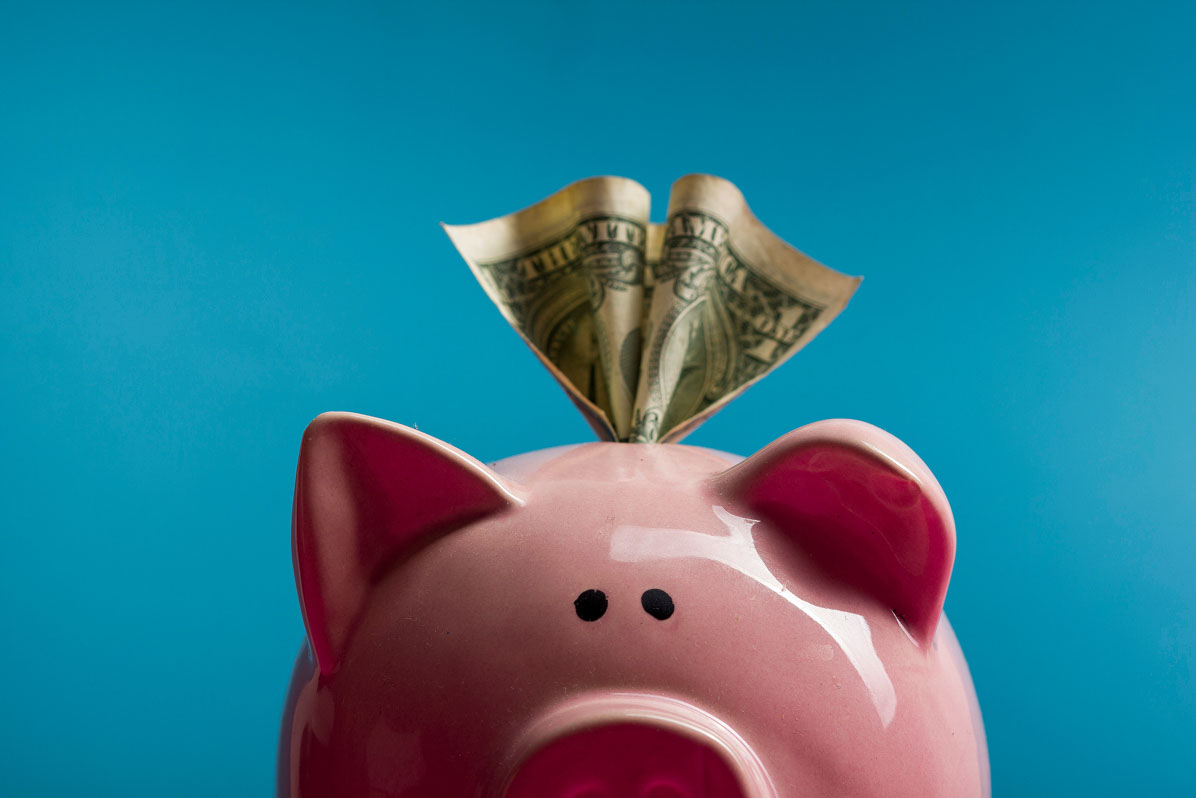
S&P 500 and ASX Rally as Big Banks Drive Markets
Both the S&P 500 and ASX have rallied on the back of stronger-than-expected major bank earnings reports on both sides of the Pacific.
In the US, Bank of America reported a 31% year-over-year increase in earnings per share at $1.06, exceeding Wall Street's estimate of $0.95. Meanwhile, Morgan Stanley delivered a record-breaking quarter with EPS of $2.80, a nearly 49% increase from the same period last year.
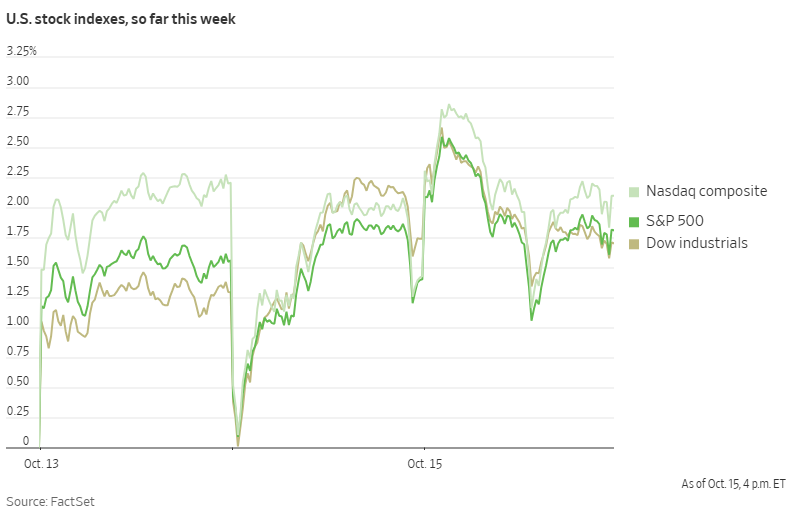
On the Australian front, the benchmark ASX 200 leapt 1.03% to 8990.99, with all four major Australian banks playing a major role. CBA closed 1.45% higher, Westpac 1.98%, NAB 1.87%, and ANZ 0.53%.
These strong bank results indicate broader economic strength, despite recent concerns about US-China trade tensions. US Treasury Secretary Scott Bessent emphasised that Washington did not want to escalate trade conflict with China and noted that President Trump is ready to meet Chinese President Xi Jinping in South Korea later this month.
With the third-quarter earnings season just getting underway, these early positive results from financial institutions could prove as the start of continued market strength through to the end of the year.
U.S. Government Shutdown Likely to Last Into November
Washington remains gridlocked as the U.S. enters its 16th day of shutdown. With no signs of compromise on the horizon, it appears increasingly likely the shutdown will extend into November and could even compromise the Thanksgiving holiday season.
Treasury Secretary Scott Bessent has warned "we are starting to cut into muscle here" and estimated "the shutdown may start costing the US economy up to $15 billion a day."
The core issue driving the shutdown is healthcare policy, specifically the expiring Affordable Care Act subsidies. Democrats are demanding these subsidies be extended, while Republicans argue this issue can be addressed separately from government funding.
The Trump administration has taken steps to blunt some of the shutdown's immediate impact, including reallocating funds to pay active-duty soldiers this week and infusing $300 million into food aid programs.
However, House Speaker Mike Johnson has emphasised these are merely "temporary fixes" that likely cannot be repeated at the end of October when the next round of military paychecks is scheduled.
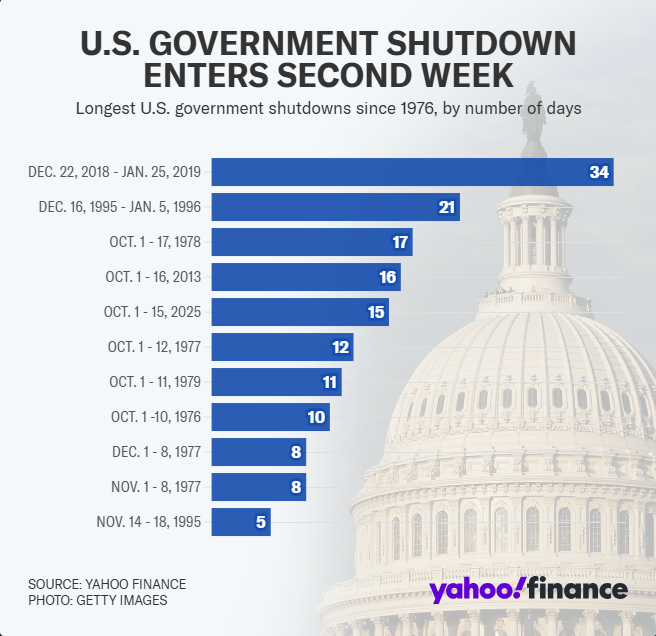
By the end of this week, this shutdown will become the third-longest in U.S. history. If it continues into November 4th, it will surpass the 34-day shutdown of 2018-2019 to become the longest government shutdown ever recorded.
This prolonged shutdown adds another layer of volatility to markets. While previous shutdowns have typically had limited long-term market impacts, the unprecedented length and timing of this closure, combined with its expanding economic toll, warrant closer attention as we move toward November.
Trump Announces Modi Has Agreed to Stop Buying Russian Oil
Yesterday, Trump announced that Indian Prime Minister Narendra Modi has agreed to stop purchasing Russian oil. He stated that Modi assured him India would halt Russian oil imports "within a short period of time," describing it as "a big step" in efforts to isolate Moscow economically.
The announcement comes after months of trade tensions between the US and India. In August, Trump imposed 50% tariffs on Indian exports to the US, doubling previous rates and specifically citing India's Russian oil purchases as a driving factor.

India has been one of Russia's top oil customers alongside China in recent years. Both countries have taken advantage of discounted Russian oil prices since the start of the Ukraine invasion.
Analysis suggests India saved between $2.5 billion to $12.6 billion since 2022 by purchasing discounted Russian crude compared to other sources, helping support its growing economy of 1.4 billion people.
Trump suggested that India's move would help accelerate the end of the Ukraine war, stating: "If India doesn't buy oil, it makes it much easier." He also mentioned his intention to convince China to follow suit: "Now I've got to get China to do the same thing."
The Indian embassy in Washington has not yet confirmed Modi's commitment. Markets will be closely watching for official statements from India and monitoring oil trading patterns in the coming weeks to assess the potential impact on global energy flows and prices.
Chart of the Day - Gold futures CFD (XAUUSD)


Mastercard Incorporated (MA) reported its latest financial results before the opening bell on Wall Street on Thursday. The US financial services company reported revenue of $5.497 billion in Q2, beating analyst estimate of $5.267 billion. Earnings per share reported at $2.56 per share vs. $2.36 per share expected. ''We had strong revenue and earnings growth again this quarter, as overall consumer spending remained robust and cross-border volumes grew 58% versus year ago,'' Michael Miebach, CEO of Mastercard said in a press release following the results. ''Increasing inflationary pressures have yet to significantly impact overall consumer spending but we will continue to monitor this closely.
We have a well-diversified business model and the demonstrated ability to deliver strong operating margins through up and down cycles,'' Miebach concluded. Mastercard Incorporated (MA) chart Shares of MasterCard were trading higher on Thursday after beating Wall Street expectations, up by around 1% at $348.50 per share. Here is how the stock has performed in the past year: 1 Month +10.56% 3 Month -7.92% Year-to-date -2.92% 1 Year -10.29% Mastercard Incorporated price targets JP Morgan $425 Wells Fargo $400 Piper Sandler $298 Mizuho $375 Truist Securities $420 Barclays $430 BMO Capital $402 Morgan Stanley $452 Mastercard Incorporated is the 19 th largest company in the world with a market cap of $338.14 billion.
You can trade Mastercard Incorporated (MA) and many other stocks from the NYSE, NASDAQ, HKEX and the ASX with GO Markets as a Share CFD. Sources: Mastercard Incorporated, TradingView, MetaTrader 5, Benzinga, CompaniesMarketCap


The Kansas City Federal Reserve is set to host the 45 th Annual Symposium at Jackson Hole Lodge in Wyoming’s Grand Teton National Park. Some of the countries and world’s most important central bankers, economists, and academics will be meeting to discuss the biggest issues facing the global economy. The key issue on the agenda is of “Reassessing Constraints on the Economy and Policy.” All eyes will be on Jerome Powell, with the chairman of the Federal Reserve expected to speak on Thursday and provide an update on the proceedings of the conference.
At last year’s event Powell was caught out after stating that inflation was transitory, only to see it become a huge long-lasting issue. Therefore, he may try and correct this perception and portray a much more conservative attitude. There is also a view from some analysts that the Fed came across too dovish in the July meeting which led to the market rally.
At this stage the market has priced in a 75-bps increase at the September meeting, however this may change. With key inflation measures slowing somewhat, the question will be whether the fed continue its aggressive interest rate hikes or eases their policy to avoid a potential recession. The market will be hoping that Powell provides some clues for what the Fed plans to do after rates peak.
They will be hoping for clarity over whether the bank will hold the rates at the high levels for some time or lower them straight away to avoid a recession. Market participants should be weary that although Jackson Hole may provide some important context to the future rates, no official policies will be set. The conference will most likely have a relatively small impact on the market, it still has the potential to provide some volatility for both equities and currency if significant attitude shifts are expressed.
The USD is currently at 5 year highs and with some positive catalysts for the currency, it may continue to rise further if the Fed continues to be aggressive in its rate hikes.
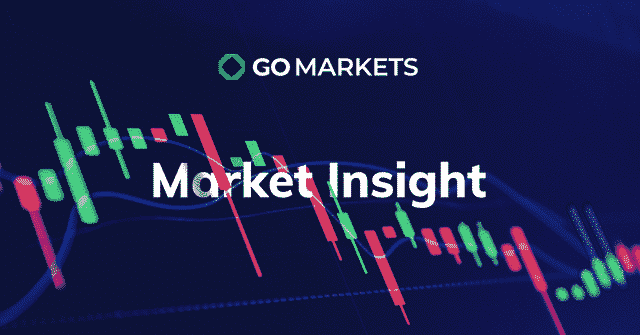

JD.com Inc. (JD) announced its fourth-quarter earnings numbers on Thursday. The Chinese e-commerce company reported revenue of $43.422 billion (up by 23% year-over-year), slightly above Wall Street analysts forecast of $43.186 billion. Earnings per share reported at $0.35 per share vs. $0.28 per share expected. ''We are pleased to finish the year with a set of strong results on both the top and bottom lines as we continued to execute and deliver on our strategic priorities,'' said Sandy Xu, Chief Financial Officer of JD.com. ''During the quarter, we further optimized our operational efficiency through technology and innovation, increasing our competitiveness as well as our ability to support our business partners.
In 2022, we will continue to execute our business strategies and focus on sustainable high-quality growth across all of our business lines,'' Xu added. JD.com Inc. (JD) Share price of JD dropped following the latest financial results on Thursday, after the weakest revenue growth in six quarters. The stock was down by around 16% at $52.13 pe share.
Here is how the stock has performed in the past year – 1 Month: -31.40% 3 Month: -34.13% Year-to-date: -25.20% 1 Year: -41.77% JD.com Inc. is the 163 rd largest company in the world with total market cap of $85.95 billion. You can trade JD.com Inc. (JD) and many other stocks from the NYSE, NASDAQ, HKEX and the ASX with GO Markets as a Share CFD. Trading Derivatives carries a high level of risk.
Sources: JD.com, TradingView, MetaTrader 5, CompaniesMarketCap
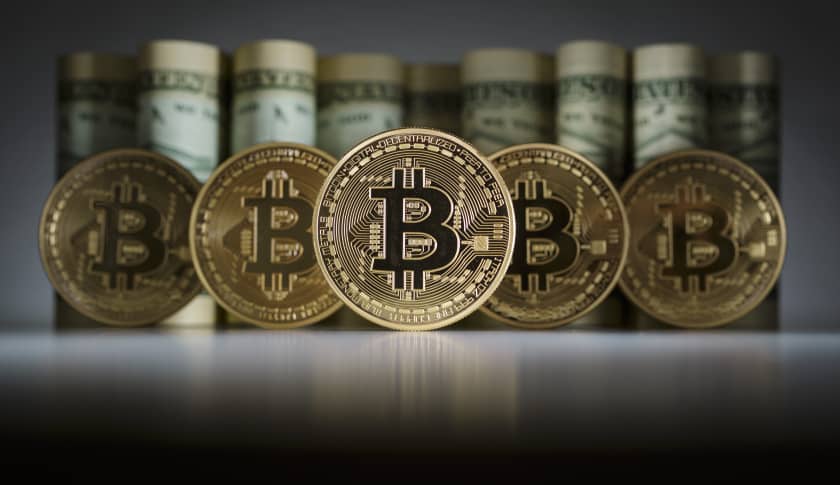

The recent price action of the Bitcoin suggests that the leading cryptocurrency may be ready for another sell off. Since last November when the currency peaked it has seen a sharp decline with retracements along the way. With inflation and recessionary pressures prevalent short-term volatility remains high as the market determines how to price the asset.
The Jackson Hole symposium is set to begin on Thursday in the USA and may effect the price in the short term if bullish or bearish sentiment comes from the event. The Chart The long-term outlook for Bitcoin is bearish. With constant sell downs and both the 50 Day and 200 day moving average both firmly pushing towards the downside.
Furthermore, the price has not been able to sustain any significant rally and has broken through its major support at $30,000 USD. Recent Price Action The concern for BTC is that it has sold out of the channel that it had been consolidating in and has therefore rejected the upward move. Similarly, the price has followed this action, twice before with both resulting in sell offs.
These patterns appear as traps for bulls because, buyers begin to feel FOMO and then enter long only to be ‘fake out’ as sellers soak up the buying volume and then continue to push the price back down. The RSI also supports more selling as it currently sits at 38 whilst the prior sell offs reached below 20. The RSI also looks to have made a triple top as shown in the chart further indicating that sellers may be ready to drive the price down further.
The concern for buyers is that this current sell off may not be finished. The 5-hour pattern looks to be forming a bear flag/pennant. If the price can break below it may fall to the next support at $17,000/18,000 USD.
This pattern is to be expected and is just reflective of sellers taking a breath before they continue to push the price lower. The price has also fallen back below the 50-period moving average indicting short term bearish sentiment. If the short-term target of $ 17,000/18,000 USD cannot hold the next target is the $13,500 USD level.


Iron ore prices have continued to rally to a six-month high this week, due in part to reports of potential easing of China’s strict COVID-19 policy and their signs of improved steel demand. The Singapore Exchange has the iron ore futures price reaching $165 USD a tonne on Tuesday, this is the highest level since July 2021. The price increase could have been attributed to a report that concluded that Beijing was considering potentially moving away from a zero-tolerance approach to COVID-19.
If this occurs, it could potentially put an end to the stop-start nature of China’s economic activities which has been happening since the start of COVID-19 pandemic. Another report indicated that experimental opening measures could arrive in a few select cities across China as early as June, which will coincide with the beginning of their Summer. A potential sign that China’s stimulus is contributing to rebound in growth can be evident earlier this month with the release of China’s Manufacturing Purchasing Managers Index (PMI).
The PMI had increased to 50.2, which was greater than the economists’ consensus of 49.8. Some experts and economists believe that the PMI’s figures released next month of March will likely provide a better indication of the true state of China’s economy, given the effects of the Lunar New Year period in the first two months of the year. Iron ore supplies could also heavily affect its global price.
There are concerns about the supply disruptions caused by the conflict between Russia and Ukraine, given their iron ore sector accounts for 100 million tonnes and 81 million tonnes a year, respectively. Heavy rain in the south-east of Brazil earlier this year, linked to the La Nina weather pattern, has forced producers to cease operations. Brazil is the second largest iron ore producer behind Australia, producing almost 400 million tonnes compared to Australia’s 900 million tonnes.
The increase in price to iron ore and energy has driven the AUD/USD to reach a new four month high of 74.41 US cents. Commonwealth Bank (CBA) believes that the currency is currently on track to end the first quarter near 74 US cents. They have updated the fair value estimate of the Australian dollar following the release of the RBA’s commodity price index for February.
CBA’s fair value for the AUD/USD ranges between 78-90 US cents, centred on 84 US cents. All in all, the AUD/USD has a healthy positive correlation with the price of iron ore due Australia being the largest producer. Investors can research the supply and demand of iron ore to achieve a good potential indication of the strength of the AUD/USD.
If you would like to take this opportunity to trade on the AUD/USD and require a trading account, you can open a trading account with GO Markets. Source: GO Markets MT5, Tradingview, Tradingeconmics, Statista, WSJ, Science.org, AFR


Investors are currently bracing for further volatility in the global markets as Russia’s troops have been deployed into eastern Ukraine. The heightened tensions between Russia and Ukraine reached a tipping point last week when the Kremlin had officially recognised regions in eastern Ukraine held by separatists (supported by Russia). Russia ordered troops to enter Ukraine on a peacekeeping mission.
The western countries have responded promptly, with the UK and US among the first countries to reprimand Russian actions with their first round of restrictive economic sanctions. The US had unveiled various sanctions targeting Russia, this included limits on sovereign debt and Russia’s two biggest banks, Promsvyazbank and VEB, who both support the military. A statement from The White House described these measures as the “first tranche of swift and severe costs on Russia” and said the Treasury would “determine that any institution in the financial services sector of the Russian Federation economy is a target for further sanctions.” Australia also followed the US's lead and applied sanctions on Russia aimed at the country’s elites and commercial sector, including transport, energy companies and banks.
Investors had a major focus on Energy commodities given Russia’s strong supply of gas to Europe, especially at a time of strong demand and constrained output that has plagued the region for much of the past year. Here are some thoughts from Vivek Dhar, analyst covering energy commodities for CBA, and Shane Oliver, chief economist for AMP Capital. Mr.
Dhar describes the initial US sanctions as relatively tame given they target sovereign debt, which is low for the Russian economy. Instead, Germany’s decision to suspend the certification of the Nord Stream 2 pipeline poses a more serious response to the escalating situation, given it would have eased the region’s gas shortages. “The extent of Russia’s incursion will likely see sanctions escalate in turn. A full‑scale invasion of Ukraine certainly opens the door to sanctions on Russia’s oil and gas exports,” he added, which could push the price of oil beyond $US100 per barrel.
Mr. Oliver believes there was a risk Russia could itself cut off supply of gas to Europe, “with a potential flow-on to oil demand at a time when conflict may threaten supply”, adding to anticipated inflation. Investors are worried about a stagflationary shock to Europe and, to a lesser degree, the global economy.
All in all, the crisis between Russia and Ukraine is still ongoing and there will certainly be further actions taken by countries across the world. As investors' uncertainty slowly rises, the global markets will adjust with every major update. Keeping up to date with other countries’ sanctions and reaction to the invasion can be a rewarding task as opportunities can present themselves.
If you have spotted an opportunity to invest in the global markets and don’t already have a trading account, you can register for an account at GO Markets.

